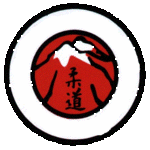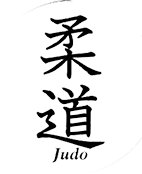Things take a different course when the aikidô-sensei sticks out his hand and the other guy decides to not grab it and do something different:
5 posters
Aikido: what if the other guy doesn't play with ?

Cichorei Kano- Posts : 1948
Join date : 2013-01-16
Age : 864
Location : the Holy See

DougNZ- Posts : 405
Join date : 2013-01-28
Nice rear clinch. Lazy and risky double leg attempt.
Last edited by DougNZ on Tue Oct 15, 2013 6:49 am; edited 1 time in total

finarashi- Posts : 507
Join date : 2013-01-11
Location : Finland
Maybe it was NOT sensei who gave his hand? Or who was it standing on the left (seen at the last seconds)

still learning- Posts : 125
Join date : 2013-01-20
Age : 55
Location : South Wales UK
Good spot, looked like crap aikido.finarashi wrote:Maybe it was NOT sensei who gave his hand? Or who was it standing on the left (seen at the last seconds)

Cichorei Kano- Posts : 1948
Join date : 2013-01-16
Age : 864
Location : the Holy See
He was not allowed to use his ki, which would have been considered as a deadly weapon ...

Kaji- Posts : 42
Join date : 2014-03-10
Location : Perth, Western Australia
Coming from a background of Korindo Aikido (not Ueshiba's Aikido), I might be able to extrapolate my understanding to other Aikido schools.
Like Judo, training in Aikido involves the two broad types of practice - kata and randori. A beginner has to first learn techniques with kata - e.g. nagekomi, uchikomi - and generally the classic version of the technique. In the initial stage of learning this is usually done in natural posture and with standard grips. Once the basics are learned, one would progress to different types of grip and posture. Meanwhile, a beginner would apply the technique in randori - perhaps first with some form of yakusoku-geiko and then gradually increasing the freedom and resistance.
Aikido is very similar in training methodology. When learning a new technique the tori stands in a standard posture - typically with one hand in front and the other back, feet also placed front and back same side, body at a 45 degree angle and standing upright. Many Aikido techniques, when first learned by a beginner, involves uke grabbing tori's outreached wrist. The next step would have uke doing a strike at tori instead of wrist-grabbing; this forces tori to practise the technique with timing and distancing. Gradually the practice has to increase in freedom, speed and uke's resistance. Over time a beginner will develop an arsenal of responses against different types of attacks and grabs - e.g. lapel grip, shoot, punches, kicks, attacks with a club, knife, etc. Randori practice has to be introduced into the curriculum with increasing levels of freedom, speed and resistance.
The objective is to train yourself to have some chance in handling any kind of attacker in hand-to-hand combat. To do that you will employ strikes, throws, pins, joint locks, strangles or anything really as long as they follow the principles of Aikido. There is no reason why an Aikidoka shouldn't practise randori with a Turkish wrestler, an MMA fighter or a knife specialist, as long as there is some form of agreement on the intensity and rules of engagement.
Needless to say, an Aikidoka training that way would definitely restrictive the posture and choice of technique to what a beginner would use. That is as ridiculous as expecting in a Judo shiai (under normal rules) mutual willingness to start with standard grips and use only classic versions of the gokyo.
The problem with many Aikido practitioners I have observed, particularly in the West, is that they have not progressed beyond the beginner's curriculum - so remaining in the kata stage of practice - but expecting to be able to handle attacks from opponents with way higher levels of freedom, force, speed and resistance than their uke.
Proper Aikido practice, like Judo, requires a lot of hard work, good instructions, escalation in force and also unfortunately risk of injuries. For some reason people naturally expect them in Judo, but not Aikido.
Like Judo, training in Aikido involves the two broad types of practice - kata and randori. A beginner has to first learn techniques with kata - e.g. nagekomi, uchikomi - and generally the classic version of the technique. In the initial stage of learning this is usually done in natural posture and with standard grips. Once the basics are learned, one would progress to different types of grip and posture. Meanwhile, a beginner would apply the technique in randori - perhaps first with some form of yakusoku-geiko and then gradually increasing the freedom and resistance.
Aikido is very similar in training methodology. When learning a new technique the tori stands in a standard posture - typically with one hand in front and the other back, feet also placed front and back same side, body at a 45 degree angle and standing upright. Many Aikido techniques, when first learned by a beginner, involves uke grabbing tori's outreached wrist. The next step would have uke doing a strike at tori instead of wrist-grabbing; this forces tori to practise the technique with timing and distancing. Gradually the practice has to increase in freedom, speed and uke's resistance. Over time a beginner will develop an arsenal of responses against different types of attacks and grabs - e.g. lapel grip, shoot, punches, kicks, attacks with a club, knife, etc. Randori practice has to be introduced into the curriculum with increasing levels of freedom, speed and resistance.
The objective is to train yourself to have some chance in handling any kind of attacker in hand-to-hand combat. To do that you will employ strikes, throws, pins, joint locks, strangles or anything really as long as they follow the principles of Aikido. There is no reason why an Aikidoka shouldn't practise randori with a Turkish wrestler, an MMA fighter or a knife specialist, as long as there is some form of agreement on the intensity and rules of engagement.
Needless to say, an Aikidoka training that way would definitely restrictive the posture and choice of technique to what a beginner would use. That is as ridiculous as expecting in a Judo shiai (under normal rules) mutual willingness to start with standard grips and use only classic versions of the gokyo.
The problem with many Aikido practitioners I have observed, particularly in the West, is that they have not progressed beyond the beginner's curriculum - so remaining in the kata stage of practice - but expecting to be able to handle attacks from opponents with way higher levels of freedom, force, speed and resistance than their uke.
Proper Aikido practice, like Judo, requires a lot of hard work, good instructions, escalation in force and also unfortunately risk of injuries. For some reason people naturally expect them in Judo, but not Aikido.


